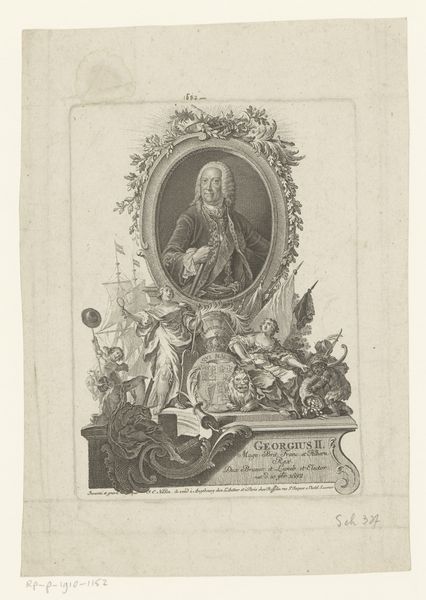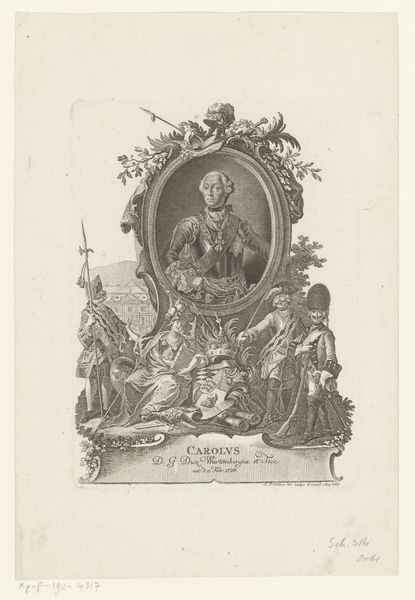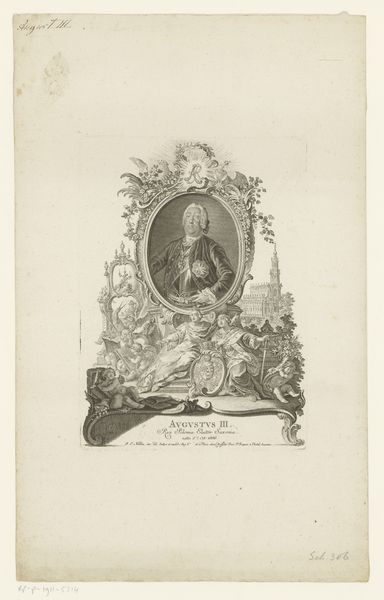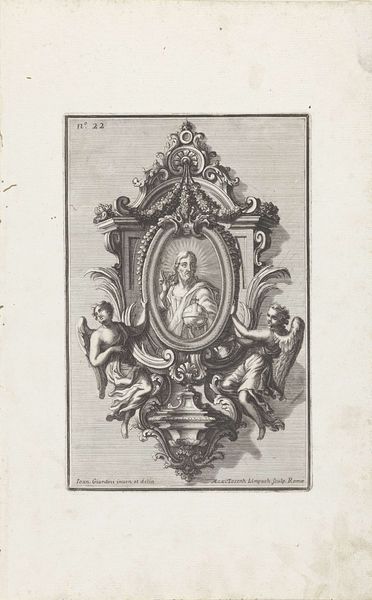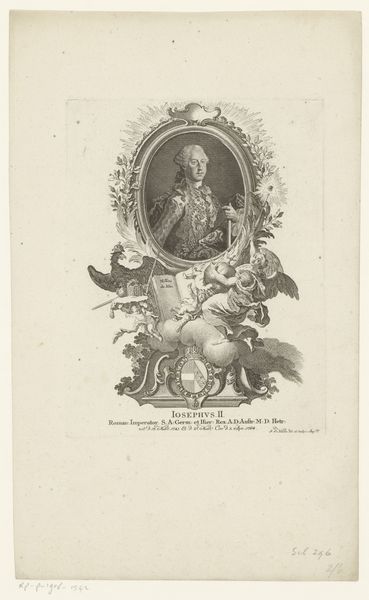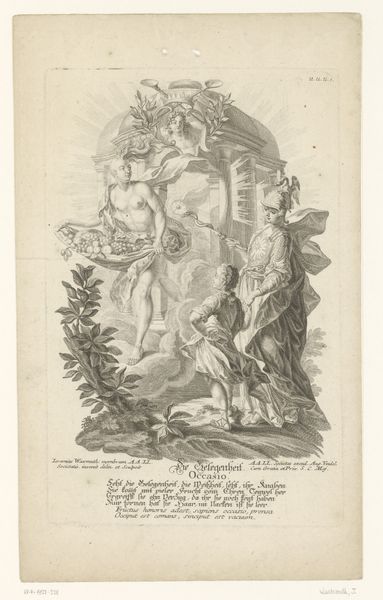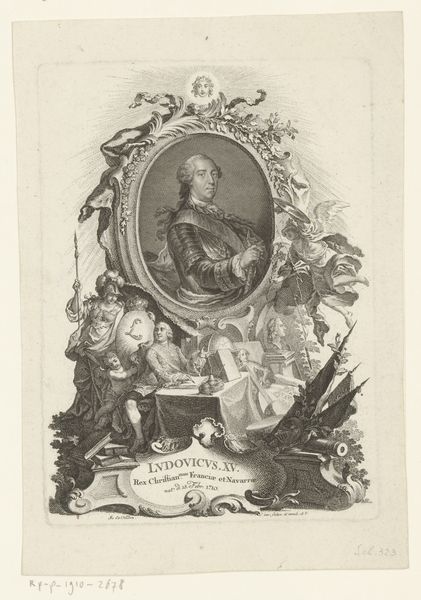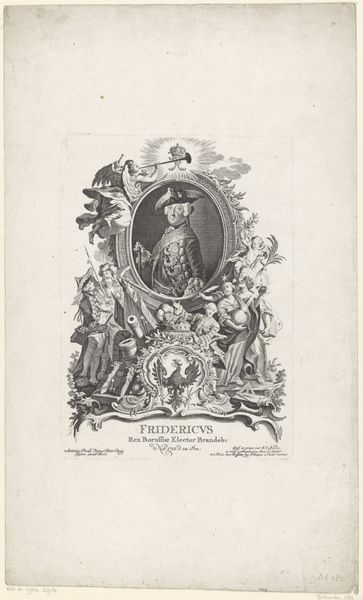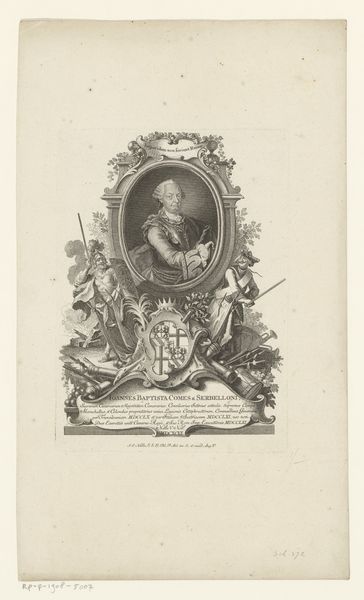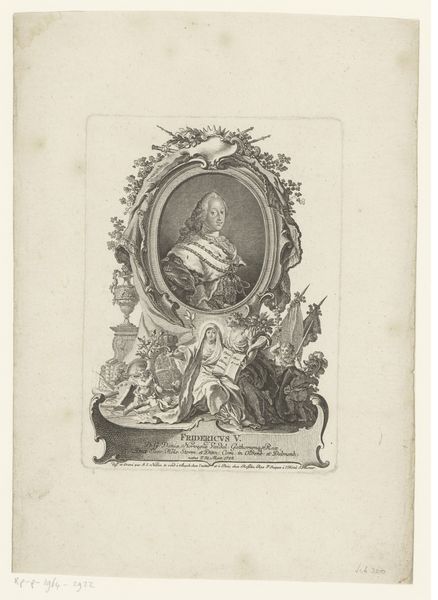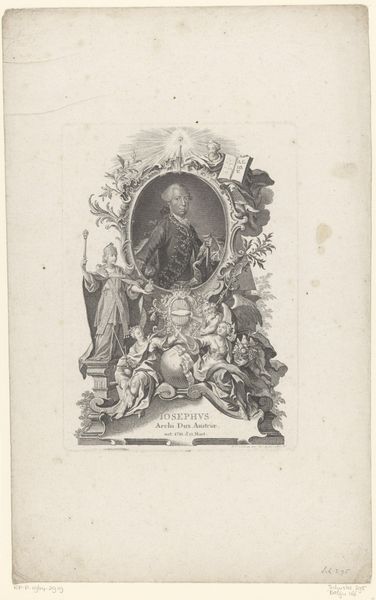
#
light pencil work
#
pen drawing
#
pen sketch
#
book
#
old engraving style
#
personal sketchbook
#
ink drawing experimentation
#
pen-ink sketch
#
pen work
#
sketchbook drawing
#
sketchbook art
Dimensions: height 221 mm, width 160 mm
Copyright: Rijks Museum: Open Domain
Editor: This is "Portrait of Francis I," created between 1745 and 1788 by Johann Esaias Nilson, currently held at the Rijksmuseum. It's a delicate, detailed print; it feels almost like a page ripped from an elaborate history book. What jumps out to you when you look at it? Curator: Well, I immediately see it as an assertion of power through imagery. It’s more than just a portrait, it’s a carefully constructed statement of legitimacy and lineage. The oval frame, the figures surrounding the central portrait... it’s all very deliberately building a narrative. What do you make of the symbolism, particularly the figures beneath the portrait? Editor: They feel like allegorical figures. The seated woman with books, maybe representing knowledge or wisdom? Is this a common visual language for portraying rulers at this time? Curator: Absolutely. Think about the function of portraiture during this period. Before photography, these images were critical for disseminating an image of the ruler and their supposed virtues. Nilson is very clearly tapping into a pre-existing visual vocabulary designed to project power and intelligence, connecting Francis I to a historical narrative of enlightened rule. The allegorical figures contribute to the carefully cultivated public image, meant to reinforce his position. Who was the intended audience of these sketches and printed work? Editor: Well, based on the date and context, I'd guess this was designed for an educated, upper-class audience already familiar with classical allegories. Perhaps even for other rulers or people connected to the royal court? Curator: Precisely! The print serves almost as propaganda, cementing Francis' place in the eyes of his peers. It underscores the importance of imagery in shaping public perception, not only for Francis but for all those figures depicted in books! Editor: I see! I initially saw just a pretty print, but it's clear how deeply intertwined this image is with politics and the very construction of power. Curator: Exactly. And seeing it in a museum today, it's important to recognize that original function, how actively involved art was in the play of social and political forces.
Comments
No comments
Be the first to comment and join the conversation on the ultimate creative platform.
